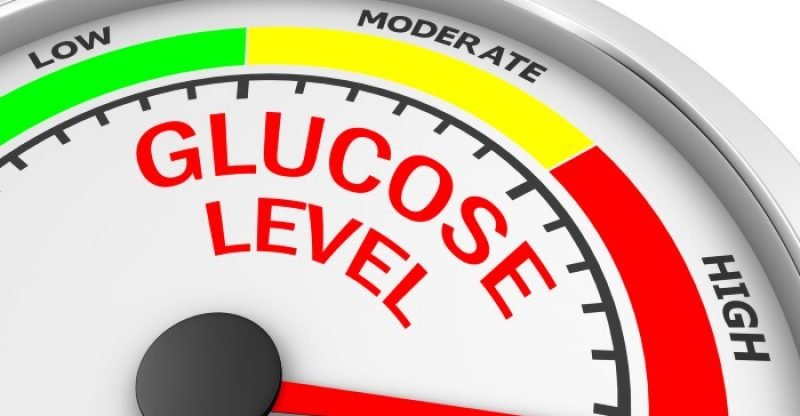How to Maintain Normal Blood Sugar Levels
Why is Sugar So Important?
Most of us simply do not have the time during the day to pause and think about our blood sugar levels.
Whether you are working all the time, chasing around after your kids, or doing any of the seemingly endless list of daily tasks, you probably have not had much time to sit down and learn about why your blood sugar is so important.
That said, here is your chance to learn exactly what blood sugar is, how it is supposed to work, how to keep it at a proper level, and what to do if your blood sugar levels become abnormal.
Make sure you read all the way to the end of this article so that you can broaden your knowledge on your blood sugar and how to maintain it.
So, let’s jump right into why your blood sugar is crucial to how your body functions.
Your blood sugar (or, as it is otherwise called, blood glucose) level is the amount of glucose you have in your body.
Glucose is one of the simpler forms of sugar, which is a carbohydrate.
There are quite a few different kinds of sugar, but blood glucose is found in the bloodstream and is distributed to your body’s cells in order to energize them.
Blood sugar is normally found in very small amounts in humans and animals.
In fact, you only have about 4 grams of glucose in your body at any given time.
Your body does its best to monitor and regulate this normalized level, although your blood glucose level tends to be at its minimum as you wake up in the morning.
Once you consume your first meal of the day (regardless of what you eat), your blood sugar level will rise several milligrams (or millimoles if you are in the United Kingdom or Canada) within a few hours.
In addition to what you consume from food and drink, your blood glucose level includes the blood sugar that is also residing in your muscles and liver.
As far as food and drink goes, the more starch a product has in it, the more glucose you get.
This means that the rice, pasta, and potatoes that you like to consume all contribute to your blood sugar level.
Since starches are polysaccharides, they get broken down into single blood glucose molecules by your body’s digestive enzymes.
Blood glucose gets absorbed into the bloodstream in the small intestine and is transported to the liver, where liver cells absorb much of the glucose and convert it into glycogen.
Glycogen gets stored in your liver.
Should your glucose levels drop, your body is able to utilize this excess of glycogen, converting it into blood sugar?
Your entire body relies on blood glucose.
However, your brain relies the most upon it, as the neurons in your brain utilize blood sugar as their primary source of energy (1).
When your blood glucose levels dip too low or spike too high, your nervous system is directly impacted in some fairly debilitating ways.
What are Normal Levels of Sugar?
Now that you know the basics of what blood sugar is and how it benefits your body, you need to be aware of what the normal glucose level is supposed to be.
The average person who does not have diabetes will have a blood sugar level somewhere within the normal fasting range, which is between 70 and 99 mg/dl (or 3.9 to 5.5 mmol/L).
For those with diabetes, your blood sugar count at normal fasting should be somewhere between 80 and 130 mg/dl (4.4 to 7.2 mmol/L).
After consuming a meal, a standard blood sugar count for someone who does not have diabetes is under 140 mg/dl (7.8 mmol/L) and under 180 mg/dl (10.0 mmol/L) for someone who has diabetes.
Additionally, a normal HbA1c (or glycated hemoglobin) rate should read at under 5.7% for those without diabetes, and at 7.0% or below for those who have diabetes.
You should take note that, when your body is busy absorbing nutrients, your blood glucose level will vary a bit depending on the quantity and type of food that you have eaten.
Your doctor will be more interested in looking at your fasting levels since those tend to be more stable and accurate.
Your blood sugar level can be tested using glucose meters, which diabetics keep on them in order to help them ensure that their levels stay within the normal range.
Additionally, your standard blood sugar level might vary a bit during pregnancy (3).
When you are pregnant, your total blood volume is dramatically elevated, which causes some dilution to the sugar in your blood.
Therefore, if you are a pregnant woman, your blood sugar level will read a bit lower than normal, and this generally is not a cause for alarm.
In fact, for pregnant women without diabetes, the normal blood glucose level should read at around 70.9+/-7.8 mg/dl (3.94+/-.43 mmol/L) for a fasting rate, 108.9+/-12.9 mg/dl (6.05+/-.72 mmol/L) about an hour after a meal, and 99.3+/-10.2 mg/dl (5.52+/-.57 mmol/L) two hours after eating.
Pregnant women with diabetes should expect their normal blood sugar level to be about 79 mg/dl (4.4 mmol/L) for fasting, 122 mg/dl (6.8 mmol/L) an hour after eating, and 110 mg/dl (6.1 mmol/L) two hours after eating.
How to Maintain a Normal Sugar Level
Maintaining a normal blood sugar level is, for most of us, relatively simple, and can be done by adopting a few healthy foods into our diets.
Food items like vinegar, almonds, walnuts, fibrous vegetables, and cinnamon have all been shown to help keep your blood sugar level within the normal range.
That said, let us go over some of the best ways to maintain a healthy blood glucose level.
Add More Cinnamon to Your Diet
One study conducted by a team of pharmacy doctors in 2013 demonstrated that cinnamon is able to cause a significant decrease in the fasting blood sugar level in individuals with Type 2 diabetes (4).
In this study, participants took doses of cinnamon for 4 to 18 weeks, starting from 120 mg/d and ranging up to 6 g/d.
The results showed that this not only reduced LDL cholesterol levels, triglycerides, and the fasting glucose level, but it also increased bodily levels of HDL cholesterol (which is commonly referred to as the “good” cholesterol).
In other words, this means that cinnamon might be able to prompt the pancreas to secrete insulin.
Incorporate a Moderate Amount of Nuts
Studies show that you can slow your body’s blood sugar production level by consuming a moderate amount of tree nuts (5).
Walnuts, pistachios, and almonds are all rich in numerous unsaturated fats (the “healthy” fats, if you will).
They are also densely-packed with quite a few bioactive compounds, such as phytosterols (plant-based compounds that interfere with absorption of cholesterol from food sources), phenolic compounds, vegetable proteins, minerals, fiber, and tocopherols (a family of Vitamin E compounds that can be added into food) (6, 7, 8).
Not only do nuts have a lot of cardiovascular health benefits, since they are known to lower LDL cholesterol levels, but they show some abilities in moderating blood pressure, and blood glucose, as well.
Of course, nuts do have quite a few calories, so you should limit yourself in terms of how many nuts you eat every day.
In fact, you can get just as many calories from a tablespoon of peanut butter as you can from eating four pecan halves!
Eat Plenty of Whole Grains
If you aren’t getting enough whole grains in your diet, you might want to consider adding more of them to your daily intake.
Whole grains contain beta-glucans, which are sugars that are held within the cell walls of these grains (9).
Beta-glucans have been used by doctors to help treat cancer and shrink the size of skin tumors, but these sugars can also raise blood sugar without causing serious spikes (unlike highly-processed foods).
If your blood sugar starts to dip, try eating some barley, rye, or oat bran.
On the plus side, beta-glucans are known to lower LDL cholesterol levels and might even be effective in treating hay fever due to ragweed allergies.
Of course, those with diabetes should avoid other grains, especially wheat, as it is known to cause diabetes and make your blood glucose skyrocket (10).
Add Some Vinegar to Your Meals
Vinegar is not exactly a normal staple in the American diet.
While it’s usual to find this ingredient in many European dishes, it might be wise for more people to add some vinegar to their diets.
Tales of vinegar’s effects stem all the way back to Babylonia in about 5000 BC (11).
In addition to being used to fight off infections and tumors, vinegar has been used as a way to normalize blood sugar.
A 2003 study by Japanese researchers revealed that vinegar has the ability to decrease the glycemic index (GI) of foods like rice, sushi, and pickled foods by anywhere from 20% to 35%.
Those with Type 2 Diabetes or insulin resistance have shown significant improvements in insulin sensitivity after consuming vinegar.
One of the easiest ways to get your daily dose of vinegar is to take just 2 ounces of apple cider vinegar with your choice of a drink.
It tends to mix the best with apple cider or apple juice, but it will cause a burning sensation going down your throat if taken by itself.
Vinegar is considered safe for most people to consume, and abnormal reactions to it have been pretty rare.
Consume Enough Fibrous Veggies
If you are anything like me, you probably don’t get enough veggies, even though you are always telling your family to eat more.
You know those leafy greens and crunchy carrots that you buy with the best intentions but just end up sitting in the fridge?
Those non-starchy, fibrous vegetables could actually do your blood glucose a world of good if you were to start consuming them on a regular basis!
While you don’t have to cut out starchy vegetables completely, upping your intake of veggies like carrots, Brussels sprouts, broccoli, and kale can help you keep your blood sugar within the normal range.
You don’t even need to consume a ton of these veggies on a daily basis to get a good amount of fiber from them.
A half-cup of cooked Brussels sprouts alone yields 4 grams of fiber.
Reduce Stress in Your Life
Many of us have heard the good old stress lecture from our doctors when we have gone to them with our various complaints of physical ailments.
While it can seem like your doctor just thinks you are crazy, there is some truth to what your doctor is telling you, especially if you have diabetes or are considered to be at risk for developing it (13).
Extreme and prolonged periods of stress have been scientifically linked to the onset and severity of both Type 1 and Type 2 Diabetes (14).
Stress impacts our entire bodies (including the autoimmune system) and our minds.
When you are under stress, your glucagon and adrenaline levels spike, the liver secretes more glucose, and your insulin levels drop.
Stress also impacts your adrenal glands (which secrete the “stress” hormone cortisol) and growth hormones, which thereby lead to a decrease in your body’s sensitivity to insulin.
This allows more glucose to make its way into the bloodstream.
This means that, if you have Type 2 Diabetes, stress can cause your blood sugar level to become elevated, and the higher it gets, the harder it will be to reduce and regulate.
While you can’t get rid of stress for good, there are some ways that you can cut down on it.
Start thinking about what stresses you out and what makes you feel relieved.
Many people find comfort in meditation, yoga, walking, aromatherapy, spending time with loved ones, and having emotional support animals in their homes.
Different types of therapy (including Cognitive Behavioral Therapy, a popular form of psychotherapy that teaches you how to substitute positive and realistic thoughts for negative and unrealistic ones) and medications are also available to help you cope with the stress in your life.
Carry Healthy Snacks Around with You
This might seem like a no-brainer to those of you who have diabetes, but even those who do not have it can benefit from carrying healthy snacks around to munch on during the day.
When you notice that you are feeling a little lightheaded or fatigued, try munching on a granola bar or a small bag of pistachios or almonds.
Doing so can help to raise your blood glucose and keep it from dropping below the normal range.
Any snack food that can be slowly digested and that is full of high-quality carbs will help you keep your blood glucose level relatively stable throughout the day.
If you aren’t a fan of granola bars or cannot eat nuts, prepare a small goodie bag of fresh fruits and veggies to take with you while you are on the go (15).
Keep in mind that, if you are diabetic, you will have to monitor your portion sizes and not just be carelessly snacking while sitting all day, as this will not do as much to help keep your glucose level normal and your energy levels up.
Eat Three Well-Rounded Meals Per Day
Your blood glucose level will remain more consistently within a normal range if you abide by the three meals a day rule.
Eating one healthy and well-rounded meal every four or five hours at three different points during the day can keep your blood sugar from dropping too low.
You will also want to make sure that you eat enough of the right foods before engaging in physical activity.
If you are diabetic, you put yourself at an increased risk of ending up in a diabetic coma if you continually skip meals (17).
Remember that, if you are diabetic, you need to be checking your blood sugar before and after meal times and exercise routines.
Many of us are tempted to skip breakfast or skimp on meals during the day because we are simply too busy to dedicate the extra time to craft our meals.
This is why it is important to plan your meals ahead, especially if you have or are at risk of developing diabetes.
Once every week, sit down and fill out a meal calendar for yourself and your family.
Not only can this help you save time and money while buying food at the grocery store, but it can keep you on track with maintaining a healthy blood glucose level.
Avoid Drinking Alcohol on an Empty Stomach
If you are struggling with maintaining a healthy blood sugar level, you might be relieved to find out that you do not need fully to cut out alcoholic drinks.
However, you should take some precautions with how you consume your favorite alcoholic beverages.
In fact, there are some alcoholic drinks that are okay for diabetics to consume in moderation (18).
These drinks include light/low-carb beers (which normally have somewhere between 3 and 6 grams of carbs), red or white wine, and sugar-free margaritas.
Some studies have shown that red and white wines have the potential to increase insulin sensitivity and reduce your risk of developing Type 2 diabetes (19).
One glass of red or white wine with a meal is generally considered safe since about 5 ounces of red or white wine normally contains somewhere around 120 calories.
Most of these calories come from the alcohol itself, not from carbs.
So, what kinds of alcohol should you consider avoiding?
Craft beers can taste amazing, but you will need to exert a lot of caution with them.
Many craft beers are loaded with calories, and pack as much as twice the amount of alcoholic content as regular beer.
You might also want to steer clear of sangria, especially since the sweeter kinds tend to be filled with sugar.
Mixers will also send your blood glucose skyrocketing, due to their sugar content.
Never, under any circumstances, should you consume alcohol while on an empty stomach.
Not only will this get you intoxicated more quickly, but it increases your chances of becoming nauseated and having your blood sugar spiral out of control.
Your liver will not recognize alcohol as the food and works instead to purge this perceived toxin from your body.
This process can take a while.
In fact, the liver is only able to clear out one alcoholic drink every hour (20).
Drinking in the evening while on an empty stomach can result in lower blood glucose in the morning, so it is imperative that you eat first.
Make Exercising a Habit
You don’t have to commit to going to the gym every day to make exercise a habit.
Even light walking can do you some good, especially if you need to lower your blood glucose.
Light exercise gets your heart pumping a bit faster, and your muscles will require glucose to keep them energized.
If you are diabetic, you should take some precautions with your exercise habits (21).
Remember to eat first, and check your blood sugar level before and after you exercise.
Aside from walking, another beneficial form of exercise (especially for those who have diabetes) is yoga (22).
One study has demonstrated that those with Type 2 diabetes can lower their blood glucose level by regularly practicing yoga.
Even 15 minutes of doing yoga every day can help with your blood sugar level, as well as building core strength, toning your muscles, and reducing anxiety.
There are plenty of yoga resources online that make it easy to learn how to do yoga moves right in the comfort of your own home.
How the Body Manages Abnormal Sugar Levels
What should you do when your blood glucose dips too low or spikes too high?
As mentioned above, exercise is key if you are experiencing high blood sugar symptoms.
Those with hyperglycemia can benefit from light to moderate exercise when their blood sugar level is spiking too high.
Also, reducing stress is important, since stress hormones like cortisol tend to cause your blood sugar level to rise.
Simple exercise done on a regular basis can alleviate some of the symptoms of chronic physical and mental/emotional stress, which has the impact of keeping your blood glucose level in check.
If your blood sugar is too low, however, you will need to pause what you are doing and consume some type of food with healthy sugars in it, or by taking your glucose tablets (also known as “sugar pills”).
With the food you consume, you need to pay attention to how many carbs are in each product.
If you are buying something that is processed and packaged, make sure you read the label so that you can know whether this food will help you meet your carb goals.
Anything that is high in fat could keep your blood sugar high, so those with hyperglycemia need to exert caution when eating fatty foods.
In fact, it is usually a good idea to avoid those foods altogether if you have high blood sugar.
Those with hyperglycemia often need to take extra preventative care steps since there is a risk of developing ketoacidosis, which is characterized by extreme dehydration and fatigue, as well as an elevated presence of ketones in the urine (23).
This condition is quite serious and is difficult to manage without the intervention of a doctor.
Signs of High Sugar
So, what are some of the high blood sugar symptoms that you should be looking out for?
Some of the most common symptoms associated with the beginning stages of hyperglycemia include (24):
- Feeling more and more thirsty over time
- Experiencing rapid weight loss
- Frequently feeling tired or fatigued
- Experiencing headaches or migraines on a regular basis
- Experiencing bouts of blurred vision
- Feeling the urge to urinate frequently
- Difficulty concentrating
- Having a blood sugar level of over 180 mg/dl
If left untreated, these symptoms can become increasingly severe over time and will be more difficult to control down the road.
More chronic symptoms of high blood sugar can include:
- Frequent skin infections
- Frequent vaginal infections in women
- Wounds and abrasions to the skin taking a long time to heal
- Damage to internal organs (especially the kidneys), the eyes, and the body’s blood vessels
- Deterioration of vision
- Nerve damage resulting in extreme hair loss on the lower body, insensitivity or experiencing painful coldness in the feet, and/or erectile dysfunction in men
- Severe gastrointestinal problems (such as diarrhea and extreme constipation)
If you find that your symptoms are progressively getting worse, you will need to consider calling your doctor.
They will likely want to run blood work and a urinalysis to determine if there is a high concentration of ketones in your urine.
Remember, if you have a blood sugar monitor, you should be using it before and after meals and exercise to determine just how high your blood sugar level is at that particular moment.
Signs of Low Sugar
Some symptoms of hypoglycemia have crossover tendencies with those of hyperglycemia, so it is important that you pay close attention to all of your symptoms and take special note of any discrepancies that you find.
If you are suffering from low blood sugar, you will likely exhibit some of the following symptoms (25):
- Feeling constantly fatigued or in a state of “brain fog”
- Experiencing heart palpitations
- Shouting or screaming during your sleep
- Feeling a tingling sensation around your mouth
- Paling of the skin
- Feeling shaky or jittery
- Feeling increasingly anxious, nervous, or easily stressed out
- Feeling increasingly irritable
- Profuse sweating
- An increased, and seemingly insatiable, appetite
As time passes and these symptoms go unchecked, you might experience more chronic symptoms of hypoglycemia, such as:
- Blurred or otherwise impaired vision
- Extreme confusion and/or signs of abnormal behavior
- Loss of consciousness
- Onset of seizures
The presence of these symptoms absolutely warrants an appointment with your doctor, so do not hesitate to contact their office and set up an appointment.
You might need to undergo some diagnostic testing and start receiving treatment for these symptoms.
Precautions
The biggest precaution that you can take is to keep an eye on any symptoms that develop.
If you have already been diagnosed with high or low blood sugar, you need to make consistent use of your monitoring device.
Monitoring your blood sugar level is the number one way to help keep it in check (26).
Should you notice that your level is dipping too low, you need to pause any exercise that you are doing and eat a healthy snack.
Carrying these snacks around with you should become a habit, as they can prevent you from experiencing severe symptoms like losing consciousness.
If your level is noticeably high, engaging in moderate exercise for even half an hour might help to lower your blood glucose.
Even if you haven’t been diagnosed with hyperglycemia or hypoglycemia, you can take a few preventative measures to maintain a healthy blood sugar level.
Eating the right foods and reducing the amount of stress you have in your life is absolutely crucial to maintaining your blood glucose.
Do’s and Don’ts
To conclude this article, let us take a moment to reflect on some dos and don’ts for maintaining a healthy blood glucose level.
Do
- Pay attention to your symptoms
- Incorporate fibrous veggies into your diet
- Carry snacks with you
- Plan your meals accordingly
- Get sufficient exercise, as long as your level isn’t too low
- Contact your doctor if your symptoms worsen
Don’t
- Exercise if your blood sugar is too low
- Consume a lot of fatty foods
- Drink alcohol on an empty stomach
- Assume your body will adjust your levels for you
Keep these factors in mind as you go about your daily activities.
And remember, just because you might not be showing symptoms now doesn’t mean that they will not manifest in the future.
Prevention is key to maintaining a healthy blood sugar level!
FDA Compliance
The information on this website has not been evaluated by the Food & Drug Administration or any other medical body. We do not aim to diagnose, treat, cure or prevent any illness or disease. Information is shared for educational purposes only. You must consult your doctor before acting on any content on this website, especially if you are pregnant, nursing, taking medication, or have a medical condition.
HOW WOULD YOU RATE THIS ARTICLE?






